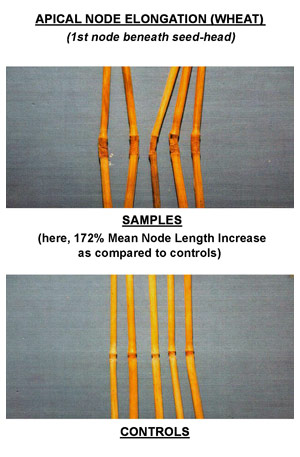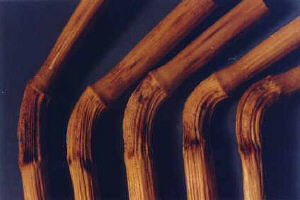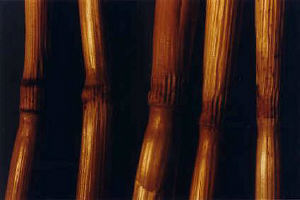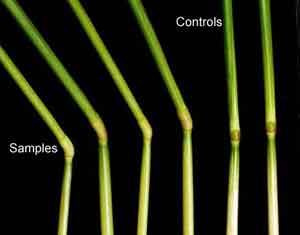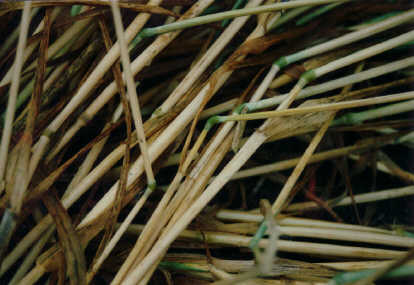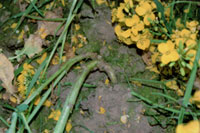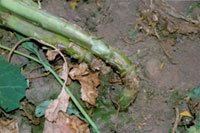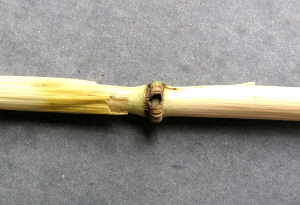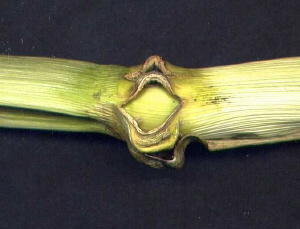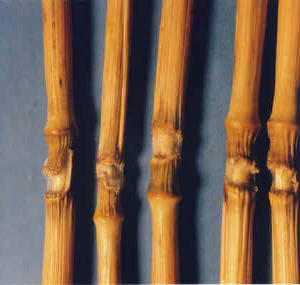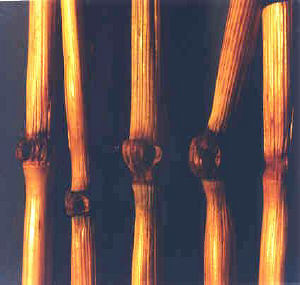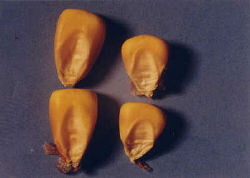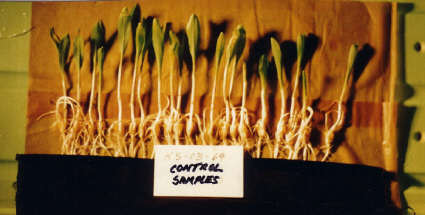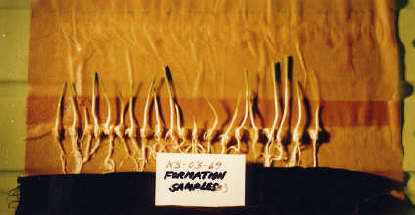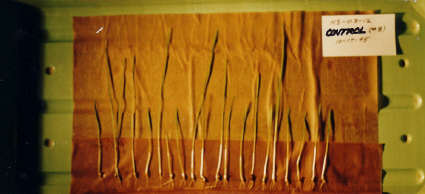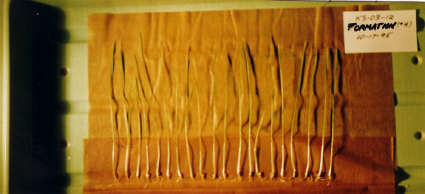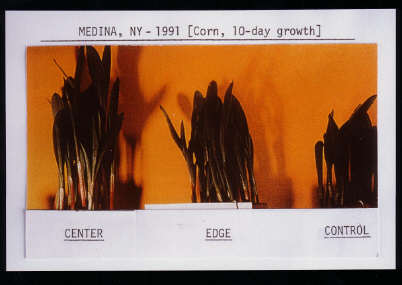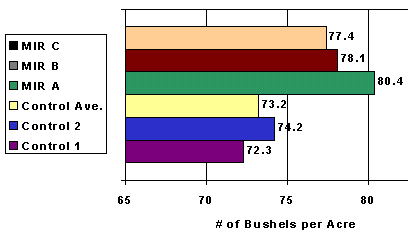.

Library of Professor Richard A. Macksey in Baltimore
POSTS BY SUBJECT
Labels
- ''ESTONIA'' (15)
- "Hindenburg" (2)
- “Yom Kippur” War (1)
- 2008 Mumbai attacks (12)
- 2017 Barcelona attacks (1)
- 2017 Westminster attack (1)
- 20th_Century (3)
- 7/7 London bombings (38)
- 911 (393)
- A.H.M. RAMSAY (2)
- Abu Ghraib (1)
- ADL (2)
- ADOLF_HITLER (23)
- ADVENTURE (1)
- Affirmative Action (1)
- Afghanistan (7)
- AFRICA (50)
- African Origins (1)
- Agriculture (3)
- AIDS (25)
- Al Azhar University (1)
- Alain de Benoist (15)
- Aleksandr Solzhenitsyn (34)
- Alexander Dugin (1)
- Alois Irlmaier (1)
- Alt-Right (1)
- AMAZONIA (3)
- America (5)
- American Islamization (21)
- American Universities (2)
- American_Indian (1)
- AMISH (1)
- Ancient Egypt (1)
- ANCIENT_CIVILISATIONS (2)
- Angels (1)
- Animal_Rights (6)
- ANTEDILUVIAN_CIVILISATION (15)
- Anthony Blunt (1)
- Anthony Ludovici (3)
- ANTHROPOLOGY (8)
- Anti-Semitism (4)
- anti-White (4)
- Anti-White Attitudes (8)
- Anti-White Racism (1)
- Antifa (4)
- Apartheid (1)
- AR. LEESE (4)
- ARCHAEOLOGY (3)
- Argentina (1)
- Armenia (4)
- Armenian Genocide (1)
- Art (15)
- Arthur Koestler (1)
- Astronomy (30)
- ATHEISM (1)
- AUSTRALIA (5)
- AUSTRIA (2)
- Ayaan Hirsi Ali (4)
- Baha'i faith (1)
- BALI (1)
- Balkans (4)
- Bangladesh (2)
- banned_weapons (1)
- Barbarossa (2)
- Barcelona Attack (1)
- BELGIUM (4)
- Benjamin Freedman (1)
- BENJAMIN SOLARI PARRAVICINI (11)
- Beslan (1)
- Bill Clinton (1)
- Biological Warfare (2)
- Black America (2)
- BLACK RACE (14)
- Black students (1)
- BLOOD PASSOVER (12)
- BOLSHEVIK REVOLUTION (16)
- Book purge (1)
- Boycottage (1)
- Brainwashing (1)
- BRAZIL (1)
- BREXIT (1)
- Brigitte Gabriel (1)
- British politics (3)
- Buddhism (5)
- California (1)
- Cambodia (8)
- CANADA (12)
- CANCER (40)
- Carolina bays (1)
- Celebrities (1)
- Celebrities-Show Business (3)
- Cell Phone towers (6)
- Censorship in Europe (7)
- Central Europe (1)
- CENTRAL_ASIA (1)
- Central/South America (1)
- Ch. Bollyn (29)
- Charles Socarides (1)
- Charles Tart (8)
- Charlie Hebdo (1)
- Che Guevara (2)
- CHEMTRAILS (15)
- CHINA (13)
- Christian Zionism (1)
- CHRISTIANISM (46)
- CHRISTIANISM in EUROPE (2)
- Churchill (7)
- CINEMA (2)
- Circumcision (9)
- CLIMATE (8)
- Climate Change (9)
- cluster bombs/mines (2)
- COLD_FUSION (2)
- COLONIALISM (1)
- Colonization of Europe (39)
- Commerce (1)
- Communism (50)
- COMMUNIST CRIMES (1)
- CONGO (5)
- Consciousness (9)
- Conservatives (1)
- Conspiracies (8)
- Consumerism (1)
- contemporary society (13)
- COPTS (2)
- CoronaVirus (13)
- Cosmogony (1)
- COVID (2)
- Crime (5)
- Criminal_Sciense (1)
- CRIMINALITY (4)
- Croatia (1)
- crop circles (5)
- CUBA (16)
- Cultural Marxism (14)
- Czech Republic (1)
- DARFUR (3)
- Dark Ages (1)
- Dead Sea Scrolls (1)
- Death penalty in ISLAM (1)
- Death-Bed Visions (1)
- DECADANT_ART (1)
- Deir Yassin (8)
- Democracy (1)
- DENMARK (4)
- Depleted uranium (6)
- DIAMOND CARTELS (1)
- DIANA (10)
- DIETRICH ECKART (1)
- DILUVIUM (5)
- Disney (2)
- DOGS (1)
- Donald TRUMP (7)
- Dönmeh (1)
- Doppelgangers (1)
- Dresden (6)
- DRUG ADDICTION (1)
- E.U. (13)
- Eastern Europe (3)
- ECHELON (1)
- ECONOMY (15)
- EDUCATION (4)
- Egypt (12)
- Eisenhower (4)
- El Inglés (2)
- Elie Wiesel (1)
- Elite_Child_Sex_Rings (16)
- Elizabeth Taylor (1)
- ENERGY (9)
- Enoch Powell (1)
- environmentalism (11)
- Ernst Zundel (1)
- ethnicity and nationality (1)
- ETHNOLOGY/ANTHROPOLOGY (4)
- EUROPE viz. ISLAM (19)
- Europe's Energy Crisis (1)
- EUROPE's FUTURE (23)
- European Parliament (2)
- EUROPEAN UNION (14)
- EUROPEAN_IDENTITY (4)
- Eustace Mullins (10)
- Evidence for the Afterlife (2)
- EVOLUTION (9)
- EXPLORATIONS (1)
- Ezra Pound (1)
- Facebook (1)
- FALSE_HISTORY (2)
- Fascism (4)
- Fashion industry (1)
- FATIMA (9)
- Female Genital Mutilation (2)
- FEMINISM (19)
- FINLAND (3)
- Fjordman (9)
- Flight 007 (1)
- Fluoride (1)
- Food (11)
- FRANCE (38)
- FRANCE viz. ISLAM (10)
- Francis P. Yockey (5)
- Frankfurt School (2)
- Franklin D. Roosevelt (6)
- freedom of speech (1)
- Fukushima (2)
- G7 (1)
- Gas chambers (1)
- gay marriage (1)
- Gaza (1)
- Geert Wilders (11)
- GENDERISM (1)
- genetically modified organisms (GMO) (8)
- Georges Bensoussan (2)
- German National Socialism (14)
- GERMANY (53)
- GERMANY viz. ISLAM (10)
- Gilad Atzmon (14)
- Giulio Meotti (2)
- Global warming (2)
- Globalism (5)
- Great Britain (67)
- Great Pyramid (16)
- Great Reset (1)
- GREECE (2)
- GREENPEACE (3)
- Guatemala (1)
- Guillaume Faye (2)
- Gulag (3)
- Gulf War (1)
- Gulf War Syndrome (1)
- Gun control (1)
- Guylaine Lanctot (2)
- HAARP (10)
- Hans Günther (8)
- Harry Potter (1)
- Hate Group (1)
- HEALTH (114)
- HEMP (1)
- Henry Makow (2)
- Hidden History (15)
- HIDDEN HYPNOSIS TECHNIQUES (1)
- Hiroshima (5)
- Historical Review (67)
- History_of_IDEAS (3)
- HMS Hampshire (3)
- Hollow Earth (22)
- Hollywood (12)
- Holocaust (140)
- HOLODOMOR_1932-33 (17)
- Homosexuality (9)
- Horst Mahler (4)
- Howard Hughes (1)
- Human Equality (2)
- HUMAN_ORIGINS (2)
- HUMAN_RIGHTS (3)
- Humanitarian politics (1)
- Humorous (1)
- HUNGARY (2)
- HYPERBOREA (7)
- IAN STEVENSON (13)
- ICELAND (1)
- Image of Guadalupe (2)
- Immigration (29)
- IMPORTANT (4)
- INDIA (24)
- IndoEuropean (12)
- Indonesia (5)
- INFECTIOUS DISEASES EPIDEMICS (1)
- Infrasound Weapons (1)
- Intellectual_freedom (1)
- Intelligence (21)
- Intelligent design (8)
- International Criminal Tribunal (3)
- INTERNET (1)
- INTERRACIAL_RELATIONS (1)
- INTIMIDATION (4)
- INVENTIONS (3)
- IQ (4)
- IRAN (12)
- Iranian regime violence (1)
- IRAQ (22)
- IRAQ_war (11)
- IRELAND (5)
- Irish savant (3)
- ISLAM (347)
- Islam in Europe/America (100)
- ISLAM in RUSSIA (1)
- ISLAM propagandists (5)
- ISLAMIST INTIMIDATION (27)
- ISLAMIST_VIOLENCE (47)
- ISLAMIZATION OF EUROPE (92)
- Islamophobia (7)
- ISRAEL (128)
- Israel Shamir (1)
- Israel Supreme Court (1)
- ISRAEL-ARAB RELATIONS (11)
- ISRAEL's_ATOMIC_BOMB (4)
- ISRAEL/EU RELATIONS (1)
- ITALY (7)
- J.Kaminski (4)
- Japan (2)
- Jewish History (1)
- Jewish Question (1)
- JEWS (119)
- JEWS in GERMANY (1)
- JEWS in USA (1)
- JEWS/ISRAEL-USA_relations (52)
- JFK Assassination (40)
- JFK/RFK (2)
- Jihad (20)
- Jo Cox (6)
- Joe Sobran (4)
- John Bryant (16)
- John Lear (3)
- Jon Rappoport (1)
- Journalists (2)
- Judith Bergman (2)
- Julius Evola (37)
- Jyllands-Posten newspaper (1)
- Kafirs (1)
- Karl Marx (1)
- Katie King (1)
- Katyn (11)
- Kennedys (1)
- KENYA (1)
- Kevin MacDonald (41)
- KHAZARs (1)
- Knut Hamsun (1)
- Kurdistan (3)
- KURDS (3)
- Lasha Darkmoon (15)
- Laurel Canyon (4)
- Layla Anwar (4)
- LEBANON (3)
- LEFT (20)
- LGBT (3)
- Liberalism (1)
- Lord Kitchener (4)
- Lord Northcliff (1)
- Lost Civilisations (2)
- Lost Technology (1)
- Louis XVII (1)
- LYDDA (1)
- MADELEINE McCANN (4)
- Magic (1)
- Magnesium (7)
- Mahathir (1)
- Mahatma Gandhi (4)
- Malaysia (2)
- Manchester Terror Attack (1)
- Manchester terrorist attack (11)
- Manipulation (69)
- MAPS (1)
- Mark Weber (10)
- Mass immigration_Multiculturalism (57)
- Mass_Media (5)
- Mass-Psychology (4)
- Massacres (1)
- May-June 2017 London Jihadist attacks (4)
- Medjugorje apparitions (3)
- METEMPSYCHOSIS (17)
- MEXICO (1)
- MH370 (2)
- MIDDLE EAST (47)
- Military Tribunal at Nuremberg (11)
- MIND CONTROL (26)
- MONEY-Banking (8)
- Monsanto (9)
- Moon Landing (1)
- Morality (1)
- Mormonism (1)
- Mortacracy (6)
- MULTICULTURALISM (14)
- MUSIC MAFIA (2)
- Muslim Brotherhood (5)
- Muslim Honor Killings (1)
- Muslim Persecution of Christians (3)
- MUSLIMS IN EUROPE (81)
- Mussolini (3)
- Mysterious (69)
- Mysterious_SKY (1)
- Nathuram Godse (3)
- National Memorial and Arboretum (1)
- Native Americans (1)
- NAZISM (1)
- Neapolis (1)
- NESSIE (17)
- Netherlands (10)
- New World Order (4)
- NEW_ZEALAND (1)
- NGOs (3)
- Nicolai Sennels (1)
- NIGERIA (1)
- NO-borders (1)
- no-go zones (2)
- NOAM CHOMSKY (4)
- Nonie Darwish (14)
- North Africa (3)
- NORWAY (5)
- Norway massacre (4)
- NUCLEAR (12)
- Nutrition (20)
- Obama (2)
- Occult Symbols (21)
- Oklahoma City bombing (7)
- OLYMPIC_GAMES (13)
- OPINION (9)
- Orel_Yiftachel (5)
- Organized Jewry (15)
- P. Buchanan (26)
- PACIFISM (1)
- PAEDOPHILIA (15)
- Paganism (2)
- PAKISTAN (3)
- PALESTINE 1944-1948 (1)
- Palestinians (19)
- PARIS (1)
- Patrice Lumumba (1)
- PATRICIA HEARST (2)
- Patton (2)
- Paul Craig Roberts (1)
- Paul Weston (9)
- PEARL HARBOR (1)
- Persecuted Christians (7)
- PERSONALITIES (1)
- Philosophy of Civilization (1)
- Photographic_Archive (1)
- Photography (2)
- Physics (9)
- POLAND (5)
- POLAR REGIONS (30)
- Poliomyelitis (8)
- Political Thought (56)
- Pollution (3)
- Polynesia (25)
- Pope Benedict (1)
- Popular Culture (2)
- POPULATION FORECAST (4)
- Populism (1)
- Pornography (2)
- PORTUGAL (6)
- Post-War Politics (1)
- PREHISTORY (28)
- propaganda (5)
- Prophecies (14)
- Psychedelics (66)
- PSYCHIATRY (10)
- Psychical Research (124)
- Psychology (6)
- Putin (1)
- QATAR (4)
- Qater-France Relations (1)
- QUEBEC (1)
- Queen Victoria (1)
- R.R.Rife (10)
- Race (135)
- RACE MIXING (2)
- Racism (5)
- RAPE statistics (1)
- RED_Alert (4)
- Religion (27)
- René Guénon (1)
- REPUBLICAN PARTY (1)
- Revilo Oliver (16)
- Richard Dawkins (1)
- Riyadh address to the Muslim world (1)
- Robert Faurisson (1)
- Rockefellers (1)
- Roger Garaudy (6)
- ROMA (1)
- Roman Catholic Church (12)
- ROMANIA (1)
- Ron Paul (8)
- Rotherham Sex scandal (1)
- Rudolph Hess (1)
- Ruling_by_CORRUPTION (14)
- RUSSIA (14)
- RUSSIAN REVOLUTION (1)
- RWANDA (31)
- S. H. Pearson (1)
- Sabra-Shatila massacre (10)
- SALMAN RUSHDIE (1)
- Sandy Hook (1)
- Sanskrit (1)
- SAUDI ARABIA (7)
- Savitri Devi (27)
- Scandinavia (1)
- SCIENCE (45)
- Secret Military Technology (14)
- Secret weapons (10)
- Sedition Trial (1)
- SERBIA (1)
- sexual freedom (6)
- Sexualization of Culture (6)
- SICK SOCIETIES (5)
- Sinister sites (11)
- Skepticism (1)
- Slave trade (1)
- Slavoj Zizek (1)
- SOCIALISM (10)
- SOCIOLOGY (1)
- SOUTH AFRICA (11)
- Space/Apollo_Hoax (54)
- SPAIN (6)
- Spanish Civil War (1)
- Spengler (6)
- Spirituality (1)
- Srebrenica (1)
- STALINISM (1)
- State_criminality (9)
- Steganography (16)
- Steven Yates (7)
- STRANGE SOUNDS (4)
- Subterranean_world (10)
- SUDAN (2)
- SUPERNATURAL (16)
- Surveillance (1)
- SWASTIKA (33)
- Swaziland (1)
- SWEDEN (24)
- Switzerland (2)
- SYRIA (9)
- SYRIAN WAR (1)
- TAIWAN (1)
- Taj Mahal (13)
- Ted Kaczynski (1)
- Terrorism (47)
- TESLA (6)
- The 1001 Club (1)
- The Celts (1)
- The Cultural Integration Initiative (1)
- THE END OF WHITE RACE (29)
- The Great Flood (8)
- The Irish Savant (9)
- The Mass Rape of German Women by the Red Army (1)
- The Nuremberg Trials (5)
- The plutonium injections (4)
- the Wealth of Nations (2)
- Theo van Gogh (1)
- Thomas Dalton (3)
- Thought of the Right (64)
- Thought-control (3)
- TITANIC (72)
- tolerance law (1)
- Tom Kawczynski (1)
- Tommy Robinson (1)
- Torture (1)
- Tradition (5)
- Transatlantic Slave Trade (1)
- Transcendent Experience (6)
- Transgenderism (2)
- TRUMP (2)
- TRUMP _Administration (3)
- Tunguska (1)
- Tunisia (2)
- TURKEY (9)
- TWA flight 800 (1)
- U.S.A. (142)
- U.S.A. ARMY CRIMINALITY (18)
- U.S.A. Foreign policy (14)
- U.S.A. Military (2)
- U.S.A._HISTORY (2)
- U.S.A._POLITICS (16)
- U.S.A._SOCIETY (9)
- U.S.A.-CIA (16)
- U.S.A.-Power Structure (11)
- U.S.S. Liberty (7)
- UFOs (166)
- Ukraine (18)
- United Church of Christ (1)
- United Nations (3)
- UNKNOWN_EARTH (2)
- USA (20)
- USA Black Crime Problem (4)
- USA criminality (1)
- USA DEMOCRATS (4)
- USA Education (1)
- USA_Press (5)
- USA/2020 (25)
- USA/USSR_relations (2)
- USS San Francisco (1)
- USSR (55)
- Uvalde massacre (1)
- Vaccination (1)
- VATICAN (12)
- Vatican II (3)
- VELIKOVSKY (2)
- Vernon Coleman (14)
- Victimism (1)
- Voynich_manuscript (15)
- Vulture_Capitalism (1)
- WAFA SULTAN (1)
- War Crimes (36)
- WAR in Ukraine (3)
- water (2)
- Wayne MADSEN (2)
- WEST (17)
- WEST viz. ISLAM (14)
- WEST/ISLAM Relations (23)
- Western Masochism (3)
- WESTERN_ELITES (6)
- WHITE Ethnocentrism (3)
- White Guilt (4)
- White phosphorous (1)
- White Race (15)
- WHITE self-hatred (4)
- WILD_LIFE (1)
- Wilhelm Reich (4)
- William Gough (10)
- wind farms (1)
- Wm F. Koch (8)
- Women in Islam (9)
- World Wildlife Fund (8)
- WORLD_ORDER (56)
- WORLD's FUTURE (1)
- WWI (6)
- WWII (97)
- WWII Aftermath (42)
- WWIII (1)
- Younger Dryas Ice Age (4)
- Youth of Europe (1)
- Yugoslavia (9)
- Zimbabwe (1)
- ZIONISM (13)
POSTS ABOUT CHRISTIANISM's EARLY HISTORY ARE MAINLY ON THE "JESUS PUZZLE" PAGE
---------------------------------------------
Friday, April 30, 2010
Thursday, April 29, 2010
Crop circle appearing opposite Stonehenge
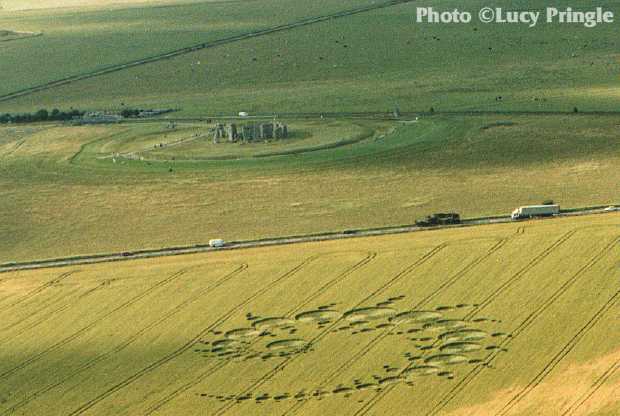
crop circle appearing opposite Stonehenge
Taxi driver witnesses crop circle appearing opposite Stonehenge. Dramatic story behind this event.
Lucy Pringle reports “This event is especially noteworthy for several reasons; a pilot flying a light aircraft from Exeter to Thruxton flew over the field opposite Stonehenge at on the afternoon of Sunday 7 July with a passenger taking photographs, at which time the field opposite on the A303 was unmarked. The pilot disembarked at Thruxton, completed the necessary landing and flight forms, refuelled and then got back into the same plane to fly back to Exeter. Imagine his surprise on when flying over the same field opposite Stonehenge some 40 - 50 minutes later he observed an enormous formation measuring 915.2 X 508 ft imprinted in the wheat below. A gamekeeper and a guard at Stonehenge both confirmed that it had not been there that morning.
The formation was named the `Julia Set` as it represented a complex computer generated fractal image to the mathematicians; to musicians, a base clef, and to marine biologists the cross section of a nautilus.
The formation was named the `Julia Set` as it represented a complex computer generated fractal image to the mathematicians; to musicians, a base clef, and to marine biologists the cross section of a nautilus.
Veteran researcher Colin Andrews tells me "The formation was first spotted from an aircraft at 6.15 PM. The pilot crossed over the field with a passenger (a medical doctor taking photographs) at 5.30pm”
There was nothing in the field at that time but “When the pilot returned at 6.15 PM he saw the formation in the field. “
"At about the same time (6:30 PM) his previous passenger drove past Stonehenge to see cars pulled off the side of the busy road."
"When I interviewed the Wiltshire Police I was told that the police emergency lines received several 999 calls just before 6.00 PM reporting a large number of vehicles pulled off the road causing a hazard. "
"When I interviewed the Wiltshire Police I was told that the police emergency lines received several 999 calls just before 6.00 PM reporting a large number of vehicles pulled off the road causing a hazard. "
German researcher Andreas Mueller has also supplied some vital information as a result of when he visited the formation after its appearance . He wrote telling me that he had listened to a man he took to be the farmer telling a group of people that he had had farm workers working in the field mending the fence until approximately 17.30 hrs that day.
“Many strange things happened to people visiting this formation. http://www.lucypringle.co.uk/articles/fractal/, the most important being several reports that led me on to develop my research into hormone levels."
“This report has remained one of the most important in the history of the crop circle phenomenon as rarely do crop circles appear during day light hours."
“In April this spring of 2009, I had been giving a talk at Alton College in Hampshire. Shortly after that a friend telephoned me to say that a friend of hers had been in a taxi and had mentioned to the taxi driver that she had just been to a fascinating talk on Crop Circles. M, the taxi driver said “ I saw one appear opposite Stonehenge”. Thinking she meant this year, my friend telephoned me but after making extensive enquiries, I realised that here was no circle anywhere near Stonehenge. I was given M’s telephone number and told her what I had heard. “O dear me, no, it was years ago.” I mentioned that only two formations had appeared close to or opposite Stonehenge, 2002 and 1996. “It was 1996 as my son who was in the army was on holiday and I was driving down to see him.”
“I eventually managed to arrange a mutually convenient date to meet M and get her story down on tape."
“M and Tim (her son's friend) were driving to Somerset in July 1996 to see her son who was in the army and driving down the hill towards Stonehenge she saw a lot of cars pulled in on the grass verge on the A303 opposite the stones. She mentioned that when people see maybe two cars or more pulled in and looking down into the field, other cars stop and gradually the traffic builds up and more and more cars draw in to have a look."
“As she drew nearer Tim said, "Mrs M there's a corn circle there".
“A car drew out and she managed to pull into the empty space and got out and joined the crowd of other people who were also watching what was happening. "There was an apparition, an isolated mist over it and as the circle was getting bigger the mist was rising above the circle. As the mist rose it got bigger and corn circle got bigger."
“There was a mist was about 2-3 feet off the ground and it was sort of spinning around and on the ground a circular shape was appearing which seemed to get bigger and bigger as simultaneously the mist get bigger and bigger and swirled faster."
"It was gradual and you are standing there and you are thinking what is going on and everyone is discussing it and more and more traffic is building up and everything and you just think that all the time you don't really realise what is happening and then you think then that's it and the thing is getting bigger and you are thinking of the beginning and end. But you don't realise what you are looking at. I didn’t understand what was happening."
"The mist wasn't anything from the ground as there was a clear space between the ground and the mist. There was no wind and no dust (she is an asthmatic). It was strangest thing I have ever seen. It was a calm summer’s day.”
“When I asked her how long she stayed looking at the event, she said it was hard to say, but maybe 20 minutes or so, but she couldn’t say as she had lost track of the time as she could not believe what she was seeing. The mist was still there when she left but whether the formation was still expanding she couldn't say."
“What colour was the mist? “Well it wasn’t brown or blue or pink; it wasn’t coming off the ground. And it didn’t go far up into the sky”.
Did you feel strange? “I felt My God what is going on, look what’s happening, are we going to see a leprechaun or the men for Mars or a Sputnik in a minute or something.”
Did you feel strange? “I felt My God what is going on, look what’s happening, are we going to see a leprechaun or the men for Mars or a Sputnik in a minute or something.”
“When I asked M which date it had appeared she thought a bit and then took my pad and wrote Sunday 7 July1996. She said she remembered this particularly as being a Sunday she was drivingagainst the traffic."
“Why haven’t you heard about this before? There were so many people watching what was happening, not just me. Why didn’t the other people talk about it?”
“Indeed it was only by chance that I got to hear about it some thirteen years after it happened due to a passenger in M’s car who had been to my lecture!"
“M hadn’t mentioned it herself except to her family and friends."
“On leaving M, I was puzzled by the time element of approx 20 minutes. I could not budge M on this; she was adamant and insisted that that was what she had witnessed and nothing I could say would make change her mind. As all the other reliable reports I have had of people witnessing crop circles appearing, they have all quite independently mentioned that the circle took between 4 and 20 seconds to happen. So why had this one taken so long? Was it due to the fact the other circles had just been small single circles whereas this one was large and complex?"
“I made several enquiries and I understand that it is generally accepted that as a result of work conducted in the 1990’s, it is possible to calculate the time a formation takes to appear based on the size and number of circles. The method relates to the earth’s gravitational and magnetic fields. This predicts a velocity of the resulting vortex filament of some 10ft/sec. The filament propagates not unlike a solar flare, repeatedly looping through the earth’s surface `embroidering` a gradually evolving pattern. To create the 151 circles in the 915.2 x 508 ft pattern would take of the order of 20-25 minutes to create."
“The descending force emits an electrical discharge which releases bubbles from the underground aquifers which rise up through the surface of the ground and patterns are formed. The anchor point of the force is always off centre."
“The descending force emits an electrical discharge which releases bubbles from the underground aquifers which rise up through the surface of the ground and patterns are formed. The anchor point of the force is always off centre."
This aspect as been observed many times over the years in certain complex crop circles.
“These patterns develop like `embroidery`, half about the ground and half under the ground in a sort of looping manner.
There is significantly less pressure inside than outside, therefore there is a sort of sucking motion from inside which bends or `sucks down` the crop at the base.
“The mist would appear to be as a result of cool water vapour rising from the aquifer (underground spring) beneath and behaves in a manner similar to what happens in the lab when electrical discharges are created through water and different patterns emerge on the surface. Mist forms a little distance from the triggering point, which would support what occurred in this case, M could see the circle growing. It is when the hydrogen atoms re-combine that all this happens as it draws in ambient energy. This is where the excess energy appears from. As for height, it would be no higher than the radius of the formation created and the mist cloud would grow as the formation grew."
“However the more complex patterns have additional information contained in the sphere and who or what presses the button to make these is not within our present knowledge or understanding."
“Indeed not only does it appear that M was correct is every aspect but it also corroborates the report by the pilot, the guard at Stonehenge and the gamekeeper. A truly remarkable event.”
Crop circles: plant abnormalities
PLANT ABNORMALITIES
The physical changes (listed below) documented in crop circle plants by Michigan biophysicist W.C. Levengood have been determined by evaluating hundreds of sample plants -- both downed and standing -- taken from inside the overall perimeter of each formation against hundreds of control plants taken at varying distances outside each formation, in several directions. More than 250 individual crop formations from multiple countries, over a 10-year period were examined in-depth. Although many of the formations studied were relatively "simple" in overall design and/or relatively "small" in overall size (primarily because of BLT's financial and/or personnel limitations, particularly in Europe), many larger and more "complex" formations -- those whose overall design included intricate geometric shapes with multiple design elements of varying sizes -- are represented here.
Many of the formations occurred in European countries and, in those cases, the plants were dried-down in open air for 4-6 weeks prior to shipping to the U.S. Some of the U.S. and Canadian formations were shipped while still green. The physical changes found in these crop circle plants, outlined below, have all been determined to be statistically significant at the 95% level of confidence:
Many of the formations occurred in European countries and, in those cases, the plants were dried-down in open air for 4-6 weeks prior to shipping to the U.S. Some of the U.S. and Canadian formations were shipped while still green. The physical changes found in these crop circle plants, outlined below, have all been determined to be statistically significant at the 95% level of confidence:
1. | On the microscopic level, abnormal enlargement of cell wall pits in bract tissue (a thin membrane which surrounds the seed- head and through which nutrients pass to the developing seed) were found. This examination utilizes the optical microscope and is quite time-consuming and, although useful in the early, exploratory stages of the research, was replaced when equally reliable criteria were subsequently discovered. | ||||||||
2a. | Enlarged (both laterally and longitudinally) plant stem nodes - the fibrous "knucle-like" protuberances found spaced along the plant stem beneath the seed-head, technically called "pulvini." Although these nodes are sometimes enlarged both laterally (they are "fatter") and longitudinally (they are "stretched"), extensive laboratory work has determined that it is the node elongation (the stretching) that is a permanent effect caused by the formation energies - and so this is the parameter now used.
| ||||||||
2b. | In some crop formations the energy system involved is intense enough to cause bending of this apical (top) node (although pronounced node bending is much more commonly found at the lower nodes on the plant stem). In a few cases we have found severe apical node bending in conjunction with marked stretchingof the node. As the example, below, illustrates the node elongation in such cases is clearly in addition to that caused by the bending of the node tissues.
| ||||||||
3a. | Marked bending of the plant stem nodes which can occur at all of the nodes in some cases, is most often observed in the 2nd, 3rd and 4th nodes down toward the bottom of the stalks. It does occasionally occur in the first, or apical node beneath the seed-head (see above). Usually this bending (if it is determined to be significant after ruling out natural plant recovery processes) is in the range of 45-90 degrees and considerable care must be taken to not confuse this node bending with two well-known plant recovery processes: (1) phototropism (the plant's natural tendency to reorient itself to sunlight) and; (2) gravitropism (the plant's natural tendency to reorient itself to the earth's gravitational field).
Depending upon the growth-stage of the plant at the time it is downed (whether it is young or old) and the species of crop involved, these natural recovery processes - phototropism and gravitropism - begin to take effect within days. Therefore node bending can only be understood as significant when it is known how old the affected crop was at the time the crop circle occurred and, particularly, how many days have elapsed since then. [Young barley, for instance, begins recovery to the up-right position almost immediately and will show significant node bending within a week; young wheat tends to recover slightly more slowly. And mature crop may not reorient itself at all, depending on the amount of vigor inherent in the plants.] But when crop circles are known to have formed during a specific time period and are found within 24-48 hrs., and significant node bending (40° +) is observed, this is an effect that can be attributed to the causative energy system. In some cases canola (rape-seed) plants have been observed to be bent at a full 180°. | ||||||||
3b. | Bending at the base of the plant stem is a totally separate condition which is thought by many people to indicate that any formation in which it is found is "genuine" (not mechanically flattened). This type of bending is found at the very bottom of the stem, where it comes out of the earth, and is often quite pronounced.
Although this particular parameter has not been scientifically evaluated, it is known that mechanical flattening (with planks, boards or human feet) of many plants (particularly canola, above) will snap or break the plant stems, rather than bend them. As the summer progresses and the cereal crops - in which a majority of the crop formations occur - dry down, the plants become less and less elastic, making bending at the stem base in these crops perhaps more significant later on in the season. | ||||||||
4. | Expulsion cavities (holes blown out at one or several of the plant stem nodes) are most often found in the 2nd node beneath the seed- head. However, in recent years they are being seen also in the 3rd and 4th nodes down the plant stem, as well as occasionally occurring in the top (apical) node. These holes are thought to be one of the plant abnormalities caused by exposure to microwave radiation which -- particularly in circles which occur in young, green crop -- instantly turns the plant's internal moisture to steam. If the microwaves are intense enough -- and the amount of moisture at the stem node great enough -- the rapidly expanding steam in these lower nodes can only escape by blowing holes out through the tough external fibers in these lower nodes. [In the apical, or top, nodes -- the youngest part of the plant -- the external fibers are considerably more elastic and the steam created there by exposure to microwaves seeps out more easily, stretching the nodes at the tops of the plants as it does so.] A darkening of the stem node around expulsion cavities is sometimes also seen, and this is usually the result of the growth of an opportunistic fungus (Ustilago tritici) which quickly forms on the exudate released from inside the plant stem. (See: http://www.bltresearch.com/labreports/mission1.php.)
| ||||||||
5. | Stunted, malformed seeds and germination effects. There are four basic changes to the seeds and germination capability in crop circle plants documented so far. These radically different reproductive effects depend upon the species of crop involved, the growth phase of the plants at the time the crop circle occurs, and the composition and intensity level of the energy system involved (which appears to differ slightly within each event as well as from event to event): | ||||||||
(a) If the crop circle occurs prior to anthesis (the flowering of the plant) and the development of the seed, the somatic (non-reproductive) tissue of the plant will continue to develop normally -- but seed development ceases or is impaired. Normally-formed glumes have been found which are totally devoid of seeds.
| |||||||
(b) When crop circles occur at a slightly later growth stage, in young crop where the seed is still forming, the developing embryo fails to grow normally. These seeds will be visually stunted (smaller), will weigh less than their controls, and will exhibit reduced or repressed germination. Here, the reproductive capacity of the plant has been compromised.
| |||||||
(c) When crop circles occur in more mature plants, where the embryo is fully formed or nearly so, the seeds will again be visually stunted and will weigh less than normal, but the effects on reproduction vary. One effect observed has been an alteration in normal growth-habit of the developing seedlings: in species which have a normal variability of growth at particular stages, this variability has been lost -- with the result being that all of the germinating seeds exhibit synchronized growth.
| |||||||
(d) | (d) Finally, when crop circles occur in mature plants with fully formed seeds, these seeds often exhibit a statistically significant massive increase in growth rate and vigor, with growth-rate up to five times the rate of the control seeds. Further, these seedlings can tolerate extreme stress (lack of water and/or light) for considerable periods of time without apparent harm.
The plant aberrations described above are thought to be caused by exposure of the plants to a complex atmospheric plasma energy system which is emitting heat (probably microwaves) in association with unusual electrical pulses and strong magnetic fields. The microwave component heats up the internal moisture in the plant stems (even mature crop nearing harvest contains some moisture), turning it to steam. In younger crop, where the external fibers are more elastic, the steam seeps out at the nodes by stretching these fibers; in older crop, where the external fibers are tougher and less elastic, the build-up of steam explodes out from the nodes, creating the holes subsequently found. The final effects on the individual plants depend upon a number factors, including the complexity and intensity level of the microwave component (which varies in each event and from location to location within any given crop circle), the modifying influence of the electrical pulses also involved, as well as the species, variety and age of the plants involved. |
6. | Beer-Lambert Principle. A clear indicator of the electromagnetic nature of the energies which cause node-length change in crop circles is the discovery that, in some formations, node-length change decreases from the center of the circle out to its edges in a very precise manner. In fact, these node-length changes were found to agree with a well-known law in physics -- the Beer-Lambert Principle-- which describes the absorption of EM energy by matter. In these cases the node-length increase was greatest at the center of the circle, decreasing as a function of sampling distance away from the center and toward the perimeter. Example 1, below, is of a completely flattened circle; examples 2 & 3 each had a standing central tuft. [Example 1] 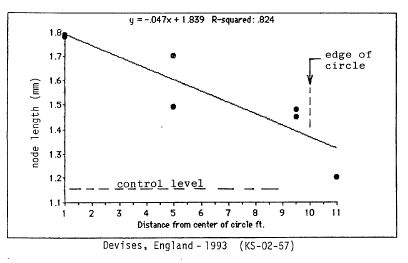 [Example 2] 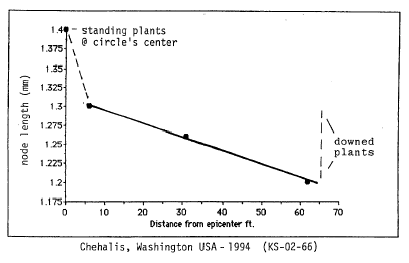 [Example 3] 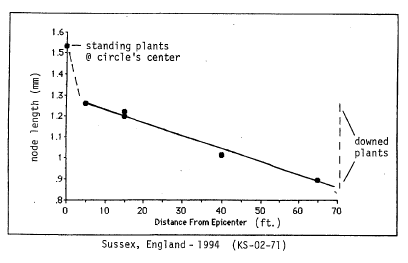 In another case, involving a simple circle in southern Holland, a bright "pinkish-purple" football-shaped light was seen to hover low over a field. It then elongagated into a disc-shaped light, subsequently discharging an energy (described by the witness as "like the Shuttle") down toward the crop surface, at which time the plants flattened into a circle. This circle was carefully sampled along three diameters and, in the laboratory, it was found that the node-length changes on both sides of each sampled diameter precisely mirrored each other --but each diameter's node-length changes differed from those found along the other two diameters. Exactly how this effect could have been produced is not understood. | ||
7. | Laboratory Replication of Crop Circle Plant Changes. Apical node (the first node beneath the seed-head) elongation and expulsion cavities (holes blown out at the lower plant-stem nodes) have been induced in normal plants in the laboratory by placing them in a commercial microwave oven for between 20-30 seconds. It is microwave radiation, here, that is heating up the moisture inside the plant stem which--as it turns to steam and expands--either stretches the more elastic fibers at the top of the plant, or blows holes in the tougher nodes farther down the plant stem. The more positive plant changes--enhanced growth rate, increased yield & increased stress tolerance--observed in the laboratory in seedlings grown from cropcircle plants which were mature when the crop circles occured, have also been replicated in the laboratory. In 1998 W.C. Levengood and John Burke obtained a patent (Patent #5740627) on equipment they developed which delivers unusual electrical pulses to normal seed. Called the MIR process and carrying the registered Trademark "Stressguard," this equipment creates organized electron-ion avalanches which then form organized plasmas, to which seeds are exposed.
Corn, tomato, carrot and many other seeds will, after exposure to the MIR "Stressguard" process, show increased seedling growth-rate and accelerated maturity, increased yield (25-35%), and a substantial improvement in ability to withstand typical plant "stressors" (lack of water and/or sunlight). Numerous field trials with a wide variety of seed have substantiated these results and a commercial application is being sought. The ability to replicate in the laboratory many of the changes documented in cropcircle plants is a strong indicator that the energies utilized in the lab are also involved as causative mechanisms in the field. In the field the major question is where are these plasma systems originating, and why? | ||
8. | Non-Geometrically downed crop. An important final note regarding these changes to crop circle plants is the fact that non-geometrically-downed crop -- usually called "lodging" by farmers and attributed to over-fertilization of the field and/or subsequent weather damage -- has sometimes been found to show these same changes (see Non-Geometric Crop Formations). This more randomly-downed, or chaotically-downed crop is often observed in the same fields in which "geometric" crop circles occur, but is also found in fields where no geometric crop circle exists. In some cases it is thought that this chaotically-downed crop is due to weather damage alone. However, testing has revealed that in many instances the same energetic situation involved in the geometric events is also involved in these non-geometrically downed areas. A control study carried out in 1997 did not reveal any of the typical plant anomalies in 100% over-fertilized wheat grown for commercial harvest. |
[Laboratory Photos & Graphs: W.C. Levengood]
UFO CASE OF Maslin Beach, Australia
UFO CASE OF Maslin Beach, Australia
Mr Thomason's first picture of the object coming out of the water. The three legs could be seen together with several portholes.
The main object has turned its bottom to the photographer and a second object has appeared a little farther away.
Both of the objects in a slightly different position.
The main object with the second object slightly under a bit farther away.
Close-up of object from the first photo.
Maslin Beach. An arrow points to the place were Mr Thomason was standing during the observation. |
Background Information / Description: The 1993 Maslin Beach photo case When Eric Thomason in Maslin Beach, Australia, looked out across the ocean, he saw - to his great surprise - how an object rose from the waves and started flying towards him. When the object came nearer, Eric took out his camera and started taking photographs. - "I could feel water dripping from the craft", he tells UFO-Aktuellt. By Clas Svahn Translation by Stefan Isaksson The photographs are quite sensational, and there are really just two alternatives: either Eric Thomason's photographs are the most astounding so far, or it's just a simple hoax. Eric Thomason, 69, is a senior citizen living in Maslin Beach in southern Australia. Not far from his house is an old abandoned mine, Maslin Old Quarry, where he sometimes takes his dog for a walk. In March 1993, Eric decided to try to document the old mine using his son's camera, a Kodak S50 with a Fuji 100 ASA-film. Despite having never owned a camera of his own and having virtually no experiencing photographing, Eric set off in order to try to capture the beautiful colors of the open-cast mine from as many angles as possible. And, s photo contest in the magazine "Southern Times-Messenger" about the best image of a sunrise over land also helped him in his decision. He thought he would be able to capture the sunrise on film from Ochre Point, a cliff 60 meters high from where hang-gliders used to take off - but the sun was hidden behind a dense layer of clouds. The Sun was Hidden Wednesday, March 10, didn't appear to be much better. It was a cool morning, only 14 degrees Celsius, and a stubborn wind came from the west. From the top of the grassy cliff, Eric was forced to accept that there wasn't going to be a sunrise that morning either. A persistent layer of clouds blocked out the sun, and the time was 06:00 AM when Eric instead turned to face the ocean to the west. - "It was then that I saw a movement on the surface on the water, and something looking like the tower on an atomic submarine emerged, Eric tells UFO-Sweden. When the object rose from the water I was able to see how three legs were pointing out from the hull. I was also able to see how it was spinning, and how the three legs were pulled in." Before the legs were pulled in, Eric managed to take his first photograph of the object, and he estimates the distance to the object at the time being about 400 meters. It then dawned on him how exposed his position was. Standing on top of the Ochre Point with the sun right behind him made him an easy target to spot for a possible crew. - "I had heard of people being abducted by UFOs, so I climbed down a slope nearby. From there I could see how the light-grey object came flying somewhat south of me, and came to a halt over the mine. At that very moment I spotted yet another object, north of the first one. That's when I snapped my second picture, but since the light from the sunrise was straight into my view-finder I moved a little to the left." While taking photographs from his hideout five meters below the top of the cliff, the new object moved towards the larger one, came to a halt, and then continued upwards, into a deepening in the larger object. - "I could see three lights on the exterior of the larger object and how it shone around the opening. Shortly after I'd taken the fourth and last photograph the larger object rose straight up and disappeared over me. When that happened, I could feel water dripping from the craft down on me." In a report form to the Australian UFO-group Australian Flying Saucer Research Society, Eric estimates the size of the object to be 40 meters, and the distance (when he first saw it rise from the ocean) to be 2 kilometres. While talking to him on the phone, Eric tells me how it never got closer to him than 400 metres. When the incident was over, Eric returned home. However, despite his amazing encounter he decided to remain quiet about it, even to his wife. He first wanted to have the film developed in order to find out if there indeed were any photographs of it. But he was not in a hurry. Before he handed in the film for development he made sure to use up the entire film. And not until May, 1994, when he had watched a UFO show on TV, did he bring forward the photographs. - "At first he didn't tell me anything since I wasn't feeling well at the time, and later he believed that the photographs weren't going to show anything", Mrs. Thomason says when UFO-Sweden talks to her. "But after he had had the film developed he showed them to me. I'm certain it's a spaceship. Eric is not the lying type, and I believe him." Quick Stroll Still, there are several details in his story that are worth pondering. Eric Thomason set his alarm clock to 05:45 in order to catch the sunrise, which took place around 06:00. During these 15 minutes, Mr. Thomason had time to get out of bed, put on several layers of warm clothing, bring his camera, fetch the dog at the back of the house, walk to Ochre Point (which according to Mrs. Thomason takes 5 minutes), climb the 60 meters tall cliff, wait for the failed sunrise, and then walk on to another site close by in order to look out over the ocean. At 06:00 sharp he took his first photograph of the object. The bright blue sky on the first photograph suggests the images were taken later in the day. In a letter, Eric describes what happened when the photographs were returned from the photo lab: "When the film had been developed I noticed yet another object on the first photograph, which I hadn't seen during the incident itself. A black dot in the distance, halfway between the object and the edge of the photograph, which might have been an airplane several kilometres away, or the smaller object on its way to intercept with the larger one." Cheap Camera According to Eric, the negatives were analyzed by Kodak in Adelaide, but he doesn't know anything about the results. - The negatives were sent in by Mark Tarrot, a "UFO-fanatic". He knows what the results were. The camera Eric used was a cheap Kodak S50, purchased in a department store for 40 USD. The S50 uses normal 35 mm film, and has never been available on the Swedish market. Its focus is set, and cannot be changed. There are, on the whole, no buttons to push except the shutter release. Cameras of this type are always set on infinitude, and have a large depth of field. And here's where an uncertainty becomes apparent. If you look at the first photograph the object, which supposedly is 400 metres away, is in focus while the horizon is fuzzy. As a matter of fact, both the object and the horizon should be in focus. That aside, the images agree with Eric's story, and during our entire conversation he answers all my questions correct, even when I try to trap him. Mr. Thomason's photographs have caused a lot of attention worldwide, and have even ended up in an American UFO almanac. - "There have been so many people calling, that I'm now starting to get sick of it", Eric says while mentioning how he is very critical to other UFO photographs. "But I've begun looking for them in the evenings while out walking the dog. I know there are UFOs from different planets in the universe. But so far I've only seen meteorites." Finally I ask Erik Thomason the most important question of them all: Are the photographs really genuine? Do they really depict the object you said emerged from the ocean? - "Yes, absolutely, he says briefly and adds, OK?" Source / Credit: Claus Svahn, UFO Sweden |
UFOs: The Physical Evidence
UFOs: The Physical Evidence - Overwhelming – But As Elusive As Ever
Michael Jordan, Journal of Alternative Realities, Volume 10, Issue 1, 2002
Summary: Any scientific study of the UFO enigma seems inevitably to result in frustrating ambiguity and contradiction. Really worthwhile UFO reports are frequently characterized by high strangeness, evasiveness, resistance to scholarly investigation and a seemingly unavoidable, bewildering array of conclusions. It would appear that the best prospect for achieving a meaningful evaluation of relevant hypotheses is likely to come from the examination of physical evidence.
Any scientific study of the UFO enigma seems inevitably to result in frustrating ambiguity and contradiction. Really worthwhile UFO reports are frequently characterized by high strangeness, evasiveness, resistance to scholarly investigation and a seemingly unavoidable, bewildering array of conclusions. Writer K. Phillips, in an essay on The Psycho-Sociology of Ufology, notes that in addition to this elusiveness, "it can be shown that the UFO phenomenon has a religious, historic and folkloric dimension, the implications of which are only just beginning to be appreciated by those who are willing to sift the evidence.... moreover, by inspection of the tens of thousands of reports from all over the world, it would seem that ¾ paradoxically ¾ while the UFO phenomenon gives every indication of being impossibly remote from us, at the same time it displays facets that indicate that it is intimately close."
We may well ask the question: why is it, if UFOs leave real, quantitative physical evidence, as many cases seem to indicate, that there is still little understanding of their physical qualities? One explanation is that the irregularities and seeming inconsistencies of these many reports have not come under the scrutiny of cross-disciplinary study until relatively recent times. Of course any such study is beset by the differences in the way that physical and social scientists tend to view the application of scientific methods in their respective fields. The special nature of the UFO subject raises subtle and often unique problems that members of either group might see in differing perspectives.
So, does this mean that our hunt for explanations and solutions ends in smoke? Hardly, as we shall see. Where possible, the separation of physical evidence into defined categories, followed by interdisciplinary examination, slowly but inexorably yields a degree of clarity to our still murky understanding of what it is we are dealing with, or more correctly, is dealing with us. After many years of bitter experience, we know that, as far as this subject is concerned, recorded data of an event, even from an official source, is simply not acceptable. An accumulation of such evidence has had little impact on the sceptics. Again, a large part of the problem is brought about by the only filters and hurdles acceptable in the eyes of orthodox science. In order to be convinced of the reality of phenomenon, science requires that it should be capable of reproduction and prediction in a laboratory. We all know that there are many aspects of our world which cannot be understood within accepted terms of reference.
In this context, UFO historian Richard M. Dolan, in his monumental UFOs and the National Security State, writes, "Not only must we ask what constitutes proof, but who is authorized to deem it so. This is not so easy to determine. Certainly, an acknowledgment of aliens would have to come from a major spokesperson of official culture ¾ the President, perhaps. The matter is more political than scientific. UFO evidence derived from a grass roots level can never survive its inevitable conflict with official culture (fifty years of failure have borne this out). An acknowledgment about the reality of the UFO phenomenon will only occur when the official culture deems it worthwhile or necessary to make it. Don’t hold your breath. As a result, the easiest thing to do with UFO evidence is to ignore it, which is what most people do."
It would appear that the best prospect for achieving a meaningful evaluation of relevant hypotheses is likely to come from the examination of physical evidence. Setting out with this objective in mind, a review panel composed of nine scientists of diverse expertise and interests, convened a four day workshop in New York, from 30 September to 3 October, 1997. More on this undertaking later, but for now let’s look at the categories of physical evidence that were presented to these scientists by UFO investigators. The evidence was associated with particular UFO reports and included: photographic evidence; luminosity estimates; radar evidence; interference with both automobile and aircraft functioning; apparent gravitational or inertial effects; ground traces; injuries to vegetation; physiological effects on witnesses; and analysis of debris. An American space science textbook in use at the Air Academy up to 1970, listing classification systems common to UFOs, included : electro-magnetic effects; radiation; ground disturbances; sound; vibration; smell; debris; inhibition of voluntary motion by observers and the sighting of creatures or beings.
One can only wonder why the category of ‘debris’, was left out of the material presented to the 1997 panel. According to Timothy Good in Beyond Top Secret, Canadian government official and engineer Wilbert Smith, admitted that a number of fragments from UFOs had been recovered and analysed by his research group, including one that had been shot from a UFO near Washington, DC, in July 1952. Smith reported that, "A glowing chunk flew off and the pilot saw it glowing all the way to the ground. He radioed his report and a ground party hurried to the scene. The thing was still glowing when they found it an hour later. The entire piece weighed about a pound [454 grams]. The segment that was loaned to me was about one third of that. It had been sawed off.... There was iron rust... the thing was in reality a matrix of magnesium orthosilicate. The matrix had great numbers ¾ thousands ¾ of fifteen-micron spheres scattered through it." Smith was asked if he had returned the piece to the US Air Force when he had completed his analysis. "Not the Air Force. Much higher than that," he replied. "The Central Intelligence Agency?" asked the interviewers. "I’m sorry gentlemen, but I don’t care to go beyond that point," said Smith.
Good writes that according to information supplied to science journalists, NASA may be in possession of physical evidence relating to extraterrestrial materials. In 1974 a Polish biophysicist and engineer contracted to NASA, was a member of an international team of English, French and Italian scientists which was given some odd metallic and plastic-like material, supposedly originating from the Soviet Union, to analyse. Under analysis with an electronic microscope, the team found small pyramid structures in the nanometre range (ie: one thousand millionth of a metre), showing a kind of super reflectivity. They found alloys that could only have been made in conditions of weightlessness. Other tests showed traces of unusual Kapton and Kevlar-type synthetics. This was in the early 1950s and those materials had not existed at that time. The melting point of the metal samples was above two thousand degrees centigrade, and tests using helium, neon and ruby lasers had no effect. The foil seemed to possess a ‘memory’, like current memory metals, but to a factor of one thousand or better. (Several witnesses of the Roswell crash described a metal with similar qualities.)
So much for alleged debris. Rather than looking at UFO cases highlighting individual categories of physical evidence, let us instead move on to look at three of the best documented and researched events, each involving not one, but a number of physical effects. Let’s begin with one of ufology’s classic cases, that of fifty-two year old mechanic and quartz prospector, Stefan Michalak, who, just after noon on 19 May 1967, saw two cigar-shaped objects, glowing red and flying at high speed above the wilderness of Falcon Lake in Manitoba. The objects became more disc-shaped as they came closer, when suddenly one stopped in mid-air, before departing towards the west, while the other landed behind some bushes at a distance of about 160 feet [fifty metres] from Michalak. Assuming it to be an experimental American aircraft, he estimated it to be about thirty-five feet [ten metres] in diameter and about twelve feet [three and a half metres] high. He observed the object through welding goggles for a period of about half an hour, noting a smell of sulphur. He then decided to approach closer and at sixty feet [eighteen metres] distance heard the muffled sound of voices and the sounds of a motor and a rush of air. He first called out in English, but when there was no response, Michalak, who was multilingual, tried Russian, German, Italian and French and Ukrainian without any success. He decided to look inside the craft. In his own words, "the inside was a maze of lights. Direct beams running in horizontal and diagonal paths and a series of flashing lights, it seemed to me, were working in a random fashion, with no particular order or sequence. I took note of the thickness of the walls of the craft. They were about twenty inches [fifty centimetres] at the cross section." Suddenly the opening was sealed by three panels, so Michalak began to examine the craft’s exterior.
He noticed no welding joints and that the surface was highly polished like glass. When he touched the surface with his glove, he found that the rubber coating melted. Suddenly the craft changed position slightly and a blast of hot air struck his chest, setting his shirt and vest alight and causing severe pain. He tore these off and the object began to ascend in a rush of air, leaving a fifteen foot [four and a half metre] diameter circle on the ground. Michalak felt dizzy and vomited for a number of days and lost twenty pounds [nine kilos] over the next few weeks. Admitted to a hospital in Winnipeg, he was treated for minor burns to his face and severe burns to his chest. His hands swelled considerably and he experienced intense headaches and rashes. Tests by the Whiteshell Nuclear Research Establishment showed no radiation above the background level.
For several days after the incident, Michalak was unable to eat, his blood lymphocyte count was down from twenty-five to sixteen per cent and he continued to feel weak, dizzy and nauseous. Timothy Good reviewing the case in Above Top Secret, writes that, "A haematologist’s report indicated that Michalak’s blood had ‘some atypical lymphoid cells in the marrow plus a moderate increase in the number of plasma cells’." Altogether Michalak was examined by a total of twenty-seven doctors, most from official sources including the departments of Health and Social Welfare and National Defence. They were unable to offer a full explanation for the cause of his symptoms.
An investigator for the Department of Health and Social Welfare found a small contaminated area at the landing site, no larger than one hundred square inches [twenty-five centimetres square], that gave a significant level of radium 226. On 30 June, Michalak, searching with another person, found the landing site complete with outline of the landed object and the remains of his shirt. When the Royal Canadian Air Force searched the site on 28 July to collect samples, their representative described ‘a very evident circle’. They also found a high level of radiation in some samples, considering the site to be ‘a possible health hazard.’
In March 1983, GEPAN, France’s equivalent of NASA, submitted a sixty-six page report put together by a committee of seven scientists on a UFO landing near the village of Trans-en-Provence, on 8 January 1981. This proved over time to rank as one of the most convincing physical evidence cases ever studied. Not only were physical traces collected by the gendarmerie within twenty-four hours, but several government laboratories were involved in their examination.
Farmer Renato Nicolai saw a flying object making a whistling sound descend rapidly to land in his yard. Shortly afterwards the object rose to tree height, emitting a whistling sound and headed in a north-easterly direction. Nicolai, who was close to the site, saw four small openings on the underside of the object, which had been on the ground for some ten seconds. He examined the landing spot and noticed a six foot [1.8 metre] diameter circular imprint, with several abrasion areas prominent in the circle. He noted that the object was metallic grey in colour, had a thick band around it and had a diameter of eight feet [2.4 metres] and a height of six feet [1.8 metres].
The gendarmerie in Draguignan took photographs and samples on the morning of 9 January. The French National Centre for Space Research was immediately alerted and the samples delivered to GEPAN, while samples of vegetation from the landing area and surroundings were sent to the National Institute for Agronomical Research. It is important to know that, as the taking of samples is naturally critical to any study. In this case GEPAN had been able to provide law enforcement officers with detailed instructions for the gathering of samples, which were then divided amongst several French laboratories for double-blind study. Their tests included physico-chemical analysis, electron diffraction, mass spectrometry by ion bombardment and biochemical analysis of vegetable samples.
The summary of these analyses confirmed that strong mechanical pressure had been applied to the soil by a heavy weight, causing erosion, striation and heating (not exceeding sixty-six degrees centigrade) and chlorophyll pigment in the leaf samples was weakened from thirty to fifty per cent. Importantly, the GEPAN result stated that attempts to duplicate these changes were unsuccessful. A strange result of the analysis of alfalfa leaves at the landing site prompted INRA to report: "From an anatomical and physiological point, they had all the characteristics of leaves of an advanced age ¾ old leaves! And that doesn’t resemble anything that we know on our planet."
Beyond the effects of the phenomenon on soil and plants, scientists are left to consider the impact on human witnesses. In the case of Stefan Michalak we looked at the dramatic physiological effects that he suffered as a direct result of his close encounter. Our final case, which Jacques Vallee described as, "the best-authenticated close encounter incident in continental Europe", includes not only hard traces, botanical data and physiological data, but detailed descriptions of beings associated with the UFO. It came to be known as ‘The Valensole Case’. Not only is it one of the most thoroughly investigated close encounters on record, but examination by French government agencies began on the day of the event.
During early morning of 1 July 1965, Maurice Masse, a French lavender farmer, was working in his field in the village of Valensole, near the lower Alps, when he suddenly noticed an object that had landed in his lavender field. At first glance from a distance, he thought that it was a helicopter or some sort of experimental prototype, but as he approached closer to the object, he saw that it was oval shaped and rested on six curved legs and some type of central pivot. Through an opening in the craft he thought that he could see two back-to-back seats. Suddenly he saw two beings, less than four feet [1.2 metres] tall, wearing grey-blue-green suits but without any type of breathing devices. One of them pointed a small tube at the farmer, which immediately paralyzed him. Although lying on the ground, he remained fully conscious, noting that as they looked at him, with what he later described as ‘concerned expressions’, they made strange gurgling sounds from deep within their throats as they communicated with one another. Masse saw that the two beings had large hairless heads, smooth white skin, large eyes that slanted away, pointed chins and small mouths without lips. After their brief dialogue, they entered the craft through a sliding panel and the object took off, leaving a deep crater and an area of moisture that later became as hard as concrete.
After about twenty minutes Masse was able to move his arms and legs, but four days after the incident he collapsed and his sleep pattern was dramatically altered for several months. Rather than his usual five or six hour sleep break, he was sleeping for periods of twelve hours or more and his wife and father noted distinct behavioural changes. Masse was a former Resistance fighter, an astute farmer and regarded as ‘absolutely trustworthy’ by police investigators. Lieutenant-Colonel Valnet, Maitre Chautard, leading the gendarmerie and the Mayor of Valensole, in fact everyone who investigated the case, concluded that Maurice Masse was telling the truth.
Investigators found that the ground where the craft had landed was soaked with moisture, although no rain had fallen. Geometrically spaced indentations covered the area and the plants were affected by the proximity of the phenomenon, appearing to decay in direct proportion to their distance from the central column of the craft. The calcium content of the soil at the landing site was found to be much higher than in samples taken from other areas in the field.
Famous UFO writer and researcher Dr Jacques Vallee, returning to the scene of the incident in 1979 and meeting with Maurice Masse and two of his close friends, makes a number of interesting observations. He notes that Masse was reluctant to give all the details of his experience to investigators as well as to his own family at the time, including the fact that he believed that some type of silent communication took place between himself and the beings. From the beginning he wanted to minimise the impact of the experience, not wanting publicity, amongst other reasons. Like many experiencers of this phenomenon, he had changed in many ways as a result of the experience, including the belief that some form of contact, once established, continued in subtle forms. Vallee concludes, "Throughout these discussions with Mr Masse I had the feeling that I was in the presence of a very intelligent man, capable of deep emotions and rational thought. He is also quite humble; he has declined to appear on a television documentary with a nationally known journalist.... I had brought with me a photograph of similar traces left after another case. Mr Masse looked at me with a mixture of amazement and relief that someone else was aware of these particular marks. He told us that he sometimes found them in his field; that’s how he knows that ‘they’ have come back. He always erases the traces immediately."
As promised, let us now return to the 1997 workshop, with a panel of nine scientists reviewing purported physical evidence associated with UFO reports and funded by Mr Laurance S Rockefeller. Unfortunately the panel was extremely limited by the time allocation of just three days. Compare this with, for example, the two year long Colorado Project that was supported by both the Air Force and the Central Intelligence Agency. Chairperson Professor Peter Sturrock quite rightly points out in his report, with respect to the limiting time allocation, "It would certainly be highly unreasonable to expect such a panel to solve, in only a few days, a problem that has remained unsolved for fifty years."
Time was only one of the limitations that the panel faced that would hinder their progress in reviewing evidence in this whole area. UFO research teams have long been familiar with these difficulties. For example, with respect to photographic evidence, the panel noted, "photographic evidence can contribute to a better understanding of the UFO phenomenon.... it is highly desirable that the photographic evidence be accompanied by strong witness testimony, but it is very difficult to meet these requirements (as in the case of remotely operated scientific monitoring stations) because of the unpredictable nature of UFO events." Again, on the subject of radar records, "the panel concludes from these presentations that the analysis of radar records requires the service of radar experts. The panel also notes that information from military radar can be obtained only with the cooperation of military authorities, and that most military authorities do not offer this cooperation." Surprise surprise!
On the subject of cases involving vehicle interference, the panel found, "these reports to be intriguing. In order to contribute to the analysis of such cases, however, scientists would wish to have available evidence of a variety of types, certainly including narrative accounts, but also involving more concrete information such as radar records, tape recordings, etc." One can only ask the obvious question, as these records exist in enormous quantities, why were they not made available?
As a final example of the difficulties inherent in marrying UFO events to the requirements of orthodox science, we note the panel’s report on one of the better documented cases involving a helicopter of the US Army Reserve en route to Cleveland, Ohio, on 18 August 1973 at 11.00pm. The four man helicopter crew were returning from Columbus at approximately 10pm on a clear, calm night with fifteen mile [twenty-four km] visibility. The helicopter was cruising at ninety knots at an altitude of 2500 feet [760 metres]. Suddenly the crew saw a single, steady red light which appeared to be pacing the helicopter. The light continued its approach and the commander took over the controls from his copilot and put the helicopter into a powerful descent of approximately five hundred feet per minute. He made contact with Mansfield control tower but, after initial radio contact, the radios malfunctioned on both VHF and UHF. When the red light increased its intensity and appeared to be on a collision course at a speed estimated to be above six hundred knots, the commander increased the rate of descent to 2000 feet per minute.
With a collision seeming imminent, the light suddenly decelerated and hovered in front of the helicopter. The crew reported seeing a cigar-shaped grey metallic object that filled the entire windshield. It had a red light at the nose, a white light at the tail and a distinctive green beam that shone from its underside. This light swung over the helicopter bathing the cockpit in green light. There was no noise or turbulence from the object. Suddenly the object made a forty degree course change and left. While the object was still visible, the crew noted that the altimeter read 3500 feet with a rate of climb of 1000 feet per minute, despite the fact that the main power control was in the full down position. The commander raised the controls and the helicopter climbed nearly another three hundred feet before positive control was regained. Radio contact was then immediately resumed. In other words the helicopter ascended from 1800 feet to 3800 feet even though its controls were set to descend.
The Mansfield helicopter case involved not only the testimony of the helicopter crew but that of five ground witnesses, plus related evidence from an airline pilot, who before the event, reported unidentified traffic and a strong blue-green light source. The panel’s comment: "The panel finds reports of this type quite interesting, but without any existence of any solid physical evidence (such as analysis of the magnetic compass might have provided), it is difficult for a panel composed of physical scientists to draw any conclusions." The panel also found it curious that the commander did not know where to report such an extraordinary event. Yet again, we see how another strong case with impeccable witnesses, can be dismissed by some scientists because they will always find some filter through which it will not fit.
Despite the enormous limitations imposed by the brevity of its meeting time, Professor Sturrock and his panel of scientists were introduced to enough evidence to induce them to make a number of recommendations and suggestions in their Summary Report which are of extreme importance to UFO research. Some of these suggestions are: that the UFO problem is not simple and should receive more attention, with an emphasis on physical evidence; that regular contact between UFO investigators and the scientific community would be helpful, as also would institutional support; and that the possibility of health risks associated with UFO events should not be ignored.
The panel was greatly impressed by the work of GEPAN and there is no doubt that the best prospects for real advance in our understanding of the UFO problem would be the creation of similar projects in other countries. The most important change that could be made by scientists is to become curious. In view of the fact that modern UFO reports began in 1947, in view of the emergence of clear patterns in UFO reports and in view of great public interest, it is remarkable that some members of the scientific community have exhibited so little curiosity in the past.
It is likely that more scientists at universities would take an interest in the problem if they felt that their activities would receive the same recognition and level of support as their more conventional research. Moreover, students would become better informed if there were occasional lectures or seminars on this subject. Investigators could help this process by developing resource material for such seminars.
The UFO problem is very complex and it is impossible to predict what might emerge from research into this area. But the same is true of any real and exciting area of scientific research. As the panel remarked, "Whenever there are unexplained observations, there is the possibility that scientists will learn something new by studying those observations." What is learned may bear no relation to the concepts that were entertained when the research was undertaken. We venture to hope that more scientists will take an interest in this curious subject so that there will be more progress in the future. There could hardly be less. In conclusion, one can only applaud the panel’s recommendations, but also wonder how they could be so unaware of the fact that many scientists, mostly connected to secret programmes, have indeed been closely involved with the UFO phenomenon since early July 1947.
References
Barclay, David & Therese. (1993) UFOs: The Final Answer. London: Blandford.
Dolan, Richard M. (2000) UFOs and the National Security State. New York: Keyhole Publishing.
Fowler, Raymond E. (1979) UFOs: Interplanetary Visitors. New York: Prentice-Hall.
Good, Timothy. (1996) Beyond Top Secret. London: Sidgwick & Jackson.
Saunders, David R. & Harkins, R. Roger. (1968) UFOs? Yes! Where the Condon Committee Went Wrong. New York: Signet Books.
Spencer, J. (1994) Gifts of the Gods. London: Virgin.
Sturrock, P.A. Physical Evidence Related to UFO Reports. Available at:
exploration.org/jse/articles/ufo_reports/sturrock/l.html>
Vallee, Jacques. (1990) Confrontations: A Scientist’s Search for Alien Contact. New York: Random House.
Vallee, Jacques. (1991) Revelations: Alien Contact and Human Deception. New York: Ballentine Books.
We may well ask the question: why is it, if UFOs leave real, quantitative physical evidence, as many cases seem to indicate, that there is still little understanding of their physical qualities? One explanation is that the irregularities and seeming inconsistencies of these many reports have not come under the scrutiny of cross-disciplinary study until relatively recent times. Of course any such study is beset by the differences in the way that physical and social scientists tend to view the application of scientific methods in their respective fields. The special nature of the UFO subject raises subtle and often unique problems that members of either group might see in differing perspectives.
So, does this mean that our hunt for explanations and solutions ends in smoke? Hardly, as we shall see. Where possible, the separation of physical evidence into defined categories, followed by interdisciplinary examination, slowly but inexorably yields a degree of clarity to our still murky understanding of what it is we are dealing with, or more correctly, is dealing with us. After many years of bitter experience, we know that, as far as this subject is concerned, recorded data of an event, even from an official source, is simply not acceptable. An accumulation of such evidence has had little impact on the sceptics. Again, a large part of the problem is brought about by the only filters and hurdles acceptable in the eyes of orthodox science. In order to be convinced of the reality of phenomenon, science requires that it should be capable of reproduction and prediction in a laboratory. We all know that there are many aspects of our world which cannot be understood within accepted terms of reference.
In this context, UFO historian Richard M. Dolan, in his monumental UFOs and the National Security State, writes, "Not only must we ask what constitutes proof, but who is authorized to deem it so. This is not so easy to determine. Certainly, an acknowledgment of aliens would have to come from a major spokesperson of official culture ¾ the President, perhaps. The matter is more political than scientific. UFO evidence derived from a grass roots level can never survive its inevitable conflict with official culture (fifty years of failure have borne this out). An acknowledgment about the reality of the UFO phenomenon will only occur when the official culture deems it worthwhile or necessary to make it. Don’t hold your breath. As a result, the easiest thing to do with UFO evidence is to ignore it, which is what most people do."
It would appear that the best prospect for achieving a meaningful evaluation of relevant hypotheses is likely to come from the examination of physical evidence. Setting out with this objective in mind, a review panel composed of nine scientists of diverse expertise and interests, convened a four day workshop in New York, from 30 September to 3 October, 1997. More on this undertaking later, but for now let’s look at the categories of physical evidence that were presented to these scientists by UFO investigators. The evidence was associated with particular UFO reports and included: photographic evidence; luminosity estimates; radar evidence; interference with both automobile and aircraft functioning; apparent gravitational or inertial effects; ground traces; injuries to vegetation; physiological effects on witnesses; and analysis of debris. An American space science textbook in use at the Air Academy up to 1970, listing classification systems common to UFOs, included : electro-magnetic effects; radiation; ground disturbances; sound; vibration; smell; debris; inhibition of voluntary motion by observers and the sighting of creatures or beings.
One can only wonder why the category of ‘debris’, was left out of the material presented to the 1997 panel. According to Timothy Good in Beyond Top Secret, Canadian government official and engineer Wilbert Smith, admitted that a number of fragments from UFOs had been recovered and analysed by his research group, including one that had been shot from a UFO near Washington, DC, in July 1952. Smith reported that, "A glowing chunk flew off and the pilot saw it glowing all the way to the ground. He radioed his report and a ground party hurried to the scene. The thing was still glowing when they found it an hour later. The entire piece weighed about a pound [454 grams]. The segment that was loaned to me was about one third of that. It had been sawed off.... There was iron rust... the thing was in reality a matrix of magnesium orthosilicate. The matrix had great numbers ¾ thousands ¾ of fifteen-micron spheres scattered through it." Smith was asked if he had returned the piece to the US Air Force when he had completed his analysis. "Not the Air Force. Much higher than that," he replied. "The Central Intelligence Agency?" asked the interviewers. "I’m sorry gentlemen, but I don’t care to go beyond that point," said Smith.
Good writes that according to information supplied to science journalists, NASA may be in possession of physical evidence relating to extraterrestrial materials. In 1974 a Polish biophysicist and engineer contracted to NASA, was a member of an international team of English, French and Italian scientists which was given some odd metallic and plastic-like material, supposedly originating from the Soviet Union, to analyse. Under analysis with an electronic microscope, the team found small pyramid structures in the nanometre range (ie: one thousand millionth of a metre), showing a kind of super reflectivity. They found alloys that could only have been made in conditions of weightlessness. Other tests showed traces of unusual Kapton and Kevlar-type synthetics. This was in the early 1950s and those materials had not existed at that time. The melting point of the metal samples was above two thousand degrees centigrade, and tests using helium, neon and ruby lasers had no effect. The foil seemed to possess a ‘memory’, like current memory metals, but to a factor of one thousand or better. (Several witnesses of the Roswell crash described a metal with similar qualities.)
So much for alleged debris. Rather than looking at UFO cases highlighting individual categories of physical evidence, let us instead move on to look at three of the best documented and researched events, each involving not one, but a number of physical effects. Let’s begin with one of ufology’s classic cases, that of fifty-two year old mechanic and quartz prospector, Stefan Michalak, who, just after noon on 19 May 1967, saw two cigar-shaped objects, glowing red and flying at high speed above the wilderness of Falcon Lake in Manitoba. The objects became more disc-shaped as they came closer, when suddenly one stopped in mid-air, before departing towards the west, while the other landed behind some bushes at a distance of about 160 feet [fifty metres] from Michalak. Assuming it to be an experimental American aircraft, he estimated it to be about thirty-five feet [ten metres] in diameter and about twelve feet [three and a half metres] high. He observed the object through welding goggles for a period of about half an hour, noting a smell of sulphur. He then decided to approach closer and at sixty feet [eighteen metres] distance heard the muffled sound of voices and the sounds of a motor and a rush of air. He first called out in English, but when there was no response, Michalak, who was multilingual, tried Russian, German, Italian and French and Ukrainian without any success. He decided to look inside the craft. In his own words, "the inside was a maze of lights. Direct beams running in horizontal and diagonal paths and a series of flashing lights, it seemed to me, were working in a random fashion, with no particular order or sequence. I took note of the thickness of the walls of the craft. They were about twenty inches [fifty centimetres] at the cross section." Suddenly the opening was sealed by three panels, so Michalak began to examine the craft’s exterior.
He noticed no welding joints and that the surface was highly polished like glass. When he touched the surface with his glove, he found that the rubber coating melted. Suddenly the craft changed position slightly and a blast of hot air struck his chest, setting his shirt and vest alight and causing severe pain. He tore these off and the object began to ascend in a rush of air, leaving a fifteen foot [four and a half metre] diameter circle on the ground. Michalak felt dizzy and vomited for a number of days and lost twenty pounds [nine kilos] over the next few weeks. Admitted to a hospital in Winnipeg, he was treated for minor burns to his face and severe burns to his chest. His hands swelled considerably and he experienced intense headaches and rashes. Tests by the Whiteshell Nuclear Research Establishment showed no radiation above the background level.
For several days after the incident, Michalak was unable to eat, his blood lymphocyte count was down from twenty-five to sixteen per cent and he continued to feel weak, dizzy and nauseous. Timothy Good reviewing the case in Above Top Secret, writes that, "A haematologist’s report indicated that Michalak’s blood had ‘some atypical lymphoid cells in the marrow plus a moderate increase in the number of plasma cells’." Altogether Michalak was examined by a total of twenty-seven doctors, most from official sources including the departments of Health and Social Welfare and National Defence. They were unable to offer a full explanation for the cause of his symptoms.
An investigator for the Department of Health and Social Welfare found a small contaminated area at the landing site, no larger than one hundred square inches [twenty-five centimetres square], that gave a significant level of radium 226. On 30 June, Michalak, searching with another person, found the landing site complete with outline of the landed object and the remains of his shirt. When the Royal Canadian Air Force searched the site on 28 July to collect samples, their representative described ‘a very evident circle’. They also found a high level of radiation in some samples, considering the site to be ‘a possible health hazard.’
In March 1983, GEPAN, France’s equivalent of NASA, submitted a sixty-six page report put together by a committee of seven scientists on a UFO landing near the village of Trans-en-Provence, on 8 January 1981. This proved over time to rank as one of the most convincing physical evidence cases ever studied. Not only were physical traces collected by the gendarmerie within twenty-four hours, but several government laboratories were involved in their examination.
Farmer Renato Nicolai saw a flying object making a whistling sound descend rapidly to land in his yard. Shortly afterwards the object rose to tree height, emitting a whistling sound and headed in a north-easterly direction. Nicolai, who was close to the site, saw four small openings on the underside of the object, which had been on the ground for some ten seconds. He examined the landing spot and noticed a six foot [1.8 metre] diameter circular imprint, with several abrasion areas prominent in the circle. He noted that the object was metallic grey in colour, had a thick band around it and had a diameter of eight feet [2.4 metres] and a height of six feet [1.8 metres].
The gendarmerie in Draguignan took photographs and samples on the morning of 9 January. The French National Centre for Space Research was immediately alerted and the samples delivered to GEPAN, while samples of vegetation from the landing area and surroundings were sent to the National Institute for Agronomical Research. It is important to know that, as the taking of samples is naturally critical to any study. In this case GEPAN had been able to provide law enforcement officers with detailed instructions for the gathering of samples, which were then divided amongst several French laboratories for double-blind study. Their tests included physico-chemical analysis, electron diffraction, mass spectrometry by ion bombardment and biochemical analysis of vegetable samples.
The summary of these analyses confirmed that strong mechanical pressure had been applied to the soil by a heavy weight, causing erosion, striation and heating (not exceeding sixty-six degrees centigrade) and chlorophyll pigment in the leaf samples was weakened from thirty to fifty per cent. Importantly, the GEPAN result stated that attempts to duplicate these changes were unsuccessful. A strange result of the analysis of alfalfa leaves at the landing site prompted INRA to report: "From an anatomical and physiological point, they had all the characteristics of leaves of an advanced age ¾ old leaves! And that doesn’t resemble anything that we know on our planet."
Beyond the effects of the phenomenon on soil and plants, scientists are left to consider the impact on human witnesses. In the case of Stefan Michalak we looked at the dramatic physiological effects that he suffered as a direct result of his close encounter. Our final case, which Jacques Vallee described as, "the best-authenticated close encounter incident in continental Europe", includes not only hard traces, botanical data and physiological data, but detailed descriptions of beings associated with the UFO. It came to be known as ‘The Valensole Case’. Not only is it one of the most thoroughly investigated close encounters on record, but examination by French government agencies began on the day of the event.
During early morning of 1 July 1965, Maurice Masse, a French lavender farmer, was working in his field in the village of Valensole, near the lower Alps, when he suddenly noticed an object that had landed in his lavender field. At first glance from a distance, he thought that it was a helicopter or some sort of experimental prototype, but as he approached closer to the object, he saw that it was oval shaped and rested on six curved legs and some type of central pivot. Through an opening in the craft he thought that he could see two back-to-back seats. Suddenly he saw two beings, less than four feet [1.2 metres] tall, wearing grey-blue-green suits but without any type of breathing devices. One of them pointed a small tube at the farmer, which immediately paralyzed him. Although lying on the ground, he remained fully conscious, noting that as they looked at him, with what he later described as ‘concerned expressions’, they made strange gurgling sounds from deep within their throats as they communicated with one another. Masse saw that the two beings had large hairless heads, smooth white skin, large eyes that slanted away, pointed chins and small mouths without lips. After their brief dialogue, they entered the craft through a sliding panel and the object took off, leaving a deep crater and an area of moisture that later became as hard as concrete.
After about twenty minutes Masse was able to move his arms and legs, but four days after the incident he collapsed and his sleep pattern was dramatically altered for several months. Rather than his usual five or six hour sleep break, he was sleeping for periods of twelve hours or more and his wife and father noted distinct behavioural changes. Masse was a former Resistance fighter, an astute farmer and regarded as ‘absolutely trustworthy’ by police investigators. Lieutenant-Colonel Valnet, Maitre Chautard, leading the gendarmerie and the Mayor of Valensole, in fact everyone who investigated the case, concluded that Maurice Masse was telling the truth.
Investigators found that the ground where the craft had landed was soaked with moisture, although no rain had fallen. Geometrically spaced indentations covered the area and the plants were affected by the proximity of the phenomenon, appearing to decay in direct proportion to their distance from the central column of the craft. The calcium content of the soil at the landing site was found to be much higher than in samples taken from other areas in the field.
Famous UFO writer and researcher Dr Jacques Vallee, returning to the scene of the incident in 1979 and meeting with Maurice Masse and two of his close friends, makes a number of interesting observations. He notes that Masse was reluctant to give all the details of his experience to investigators as well as to his own family at the time, including the fact that he believed that some type of silent communication took place between himself and the beings. From the beginning he wanted to minimise the impact of the experience, not wanting publicity, amongst other reasons. Like many experiencers of this phenomenon, he had changed in many ways as a result of the experience, including the belief that some form of contact, once established, continued in subtle forms. Vallee concludes, "Throughout these discussions with Mr Masse I had the feeling that I was in the presence of a very intelligent man, capable of deep emotions and rational thought. He is also quite humble; he has declined to appear on a television documentary with a nationally known journalist.... I had brought with me a photograph of similar traces left after another case. Mr Masse looked at me with a mixture of amazement and relief that someone else was aware of these particular marks. He told us that he sometimes found them in his field; that’s how he knows that ‘they’ have come back. He always erases the traces immediately."
As promised, let us now return to the 1997 workshop, with a panel of nine scientists reviewing purported physical evidence associated with UFO reports and funded by Mr Laurance S Rockefeller. Unfortunately the panel was extremely limited by the time allocation of just three days. Compare this with, for example, the two year long Colorado Project that was supported by both the Air Force and the Central Intelligence Agency. Chairperson Professor Peter Sturrock quite rightly points out in his report, with respect to the limiting time allocation, "It would certainly be highly unreasonable to expect such a panel to solve, in only a few days, a problem that has remained unsolved for fifty years."
Time was only one of the limitations that the panel faced that would hinder their progress in reviewing evidence in this whole area. UFO research teams have long been familiar with these difficulties. For example, with respect to photographic evidence, the panel noted, "photographic evidence can contribute to a better understanding of the UFO phenomenon.... it is highly desirable that the photographic evidence be accompanied by strong witness testimony, but it is very difficult to meet these requirements (as in the case of remotely operated scientific monitoring stations) because of the unpredictable nature of UFO events." Again, on the subject of radar records, "the panel concludes from these presentations that the analysis of radar records requires the service of radar experts. The panel also notes that information from military radar can be obtained only with the cooperation of military authorities, and that most military authorities do not offer this cooperation." Surprise surprise!
On the subject of cases involving vehicle interference, the panel found, "these reports to be intriguing. In order to contribute to the analysis of such cases, however, scientists would wish to have available evidence of a variety of types, certainly including narrative accounts, but also involving more concrete information such as radar records, tape recordings, etc." One can only ask the obvious question, as these records exist in enormous quantities, why were they not made available?
As a final example of the difficulties inherent in marrying UFO events to the requirements of orthodox science, we note the panel’s report on one of the better documented cases involving a helicopter of the US Army Reserve en route to Cleveland, Ohio, on 18 August 1973 at 11.00pm. The four man helicopter crew were returning from Columbus at approximately 10pm on a clear, calm night with fifteen mile [twenty-four km] visibility. The helicopter was cruising at ninety knots at an altitude of 2500 feet [760 metres]. Suddenly the crew saw a single, steady red light which appeared to be pacing the helicopter. The light continued its approach and the commander took over the controls from his copilot and put the helicopter into a powerful descent of approximately five hundred feet per minute. He made contact with Mansfield control tower but, after initial radio contact, the radios malfunctioned on both VHF and UHF. When the red light increased its intensity and appeared to be on a collision course at a speed estimated to be above six hundred knots, the commander increased the rate of descent to 2000 feet per minute.
With a collision seeming imminent, the light suddenly decelerated and hovered in front of the helicopter. The crew reported seeing a cigar-shaped grey metallic object that filled the entire windshield. It had a red light at the nose, a white light at the tail and a distinctive green beam that shone from its underside. This light swung over the helicopter bathing the cockpit in green light. There was no noise or turbulence from the object. Suddenly the object made a forty degree course change and left. While the object was still visible, the crew noted that the altimeter read 3500 feet with a rate of climb of 1000 feet per minute, despite the fact that the main power control was in the full down position. The commander raised the controls and the helicopter climbed nearly another three hundred feet before positive control was regained. Radio contact was then immediately resumed. In other words the helicopter ascended from 1800 feet to 3800 feet even though its controls were set to descend.
The Mansfield helicopter case involved not only the testimony of the helicopter crew but that of five ground witnesses, plus related evidence from an airline pilot, who before the event, reported unidentified traffic and a strong blue-green light source. The panel’s comment: "The panel finds reports of this type quite interesting, but without any existence of any solid physical evidence (such as analysis of the magnetic compass might have provided), it is difficult for a panel composed of physical scientists to draw any conclusions." The panel also found it curious that the commander did not know where to report such an extraordinary event. Yet again, we see how another strong case with impeccable witnesses, can be dismissed by some scientists because they will always find some filter through which it will not fit.
Despite the enormous limitations imposed by the brevity of its meeting time, Professor Sturrock and his panel of scientists were introduced to enough evidence to induce them to make a number of recommendations and suggestions in their Summary Report which are of extreme importance to UFO research. Some of these suggestions are: that the UFO problem is not simple and should receive more attention, with an emphasis on physical evidence; that regular contact between UFO investigators and the scientific community would be helpful, as also would institutional support; and that the possibility of health risks associated with UFO events should not be ignored.
The panel was greatly impressed by the work of GEPAN and there is no doubt that the best prospects for real advance in our understanding of the UFO problem would be the creation of similar projects in other countries. The most important change that could be made by scientists is to become curious. In view of the fact that modern UFO reports began in 1947, in view of the emergence of clear patterns in UFO reports and in view of great public interest, it is remarkable that some members of the scientific community have exhibited so little curiosity in the past.
It is likely that more scientists at universities would take an interest in the problem if they felt that their activities would receive the same recognition and level of support as their more conventional research. Moreover, students would become better informed if there were occasional lectures or seminars on this subject. Investigators could help this process by developing resource material for such seminars.
The UFO problem is very complex and it is impossible to predict what might emerge from research into this area. But the same is true of any real and exciting area of scientific research. As the panel remarked, "Whenever there are unexplained observations, there is the possibility that scientists will learn something new by studying those observations." What is learned may bear no relation to the concepts that were entertained when the research was undertaken. We venture to hope that more scientists will take an interest in this curious subject so that there will be more progress in the future. There could hardly be less. In conclusion, one can only applaud the panel’s recommendations, but also wonder how they could be so unaware of the fact that many scientists, mostly connected to secret programmes, have indeed been closely involved with the UFO phenomenon since early July 1947.
References
Barclay, David & Therese. (1993) UFOs: The Final Answer. London: Blandford.
Dolan, Richard M. (2000) UFOs and the National Security State. New York: Keyhole Publishing.
Fowler, Raymond E. (1979) UFOs: Interplanetary Visitors. New York: Prentice-Hall.
Good, Timothy. (1996) Beyond Top Secret. London: Sidgwick & Jackson.
Saunders, David R. & Harkins, R. Roger. (1968) UFOs? Yes! Where the Condon Committee Went Wrong. New York: Signet Books.
Spencer, J. (1994) Gifts of the Gods. London: Virgin.
Sturrock, P.A. Physical Evidence Related to UFO Reports. Available at:
exploration.org/jse/articles/ufo_reports/sturrock/l.html>
Vallee, Jacques. (1990) Confrontations: A Scientist’s Search for Alien Contact. New York: Random House.
Vallee, Jacques. (1991) Revelations: Alien Contact and Human Deception. New York: Ballentine Books.
Subscribe to:
Posts (Atom)




